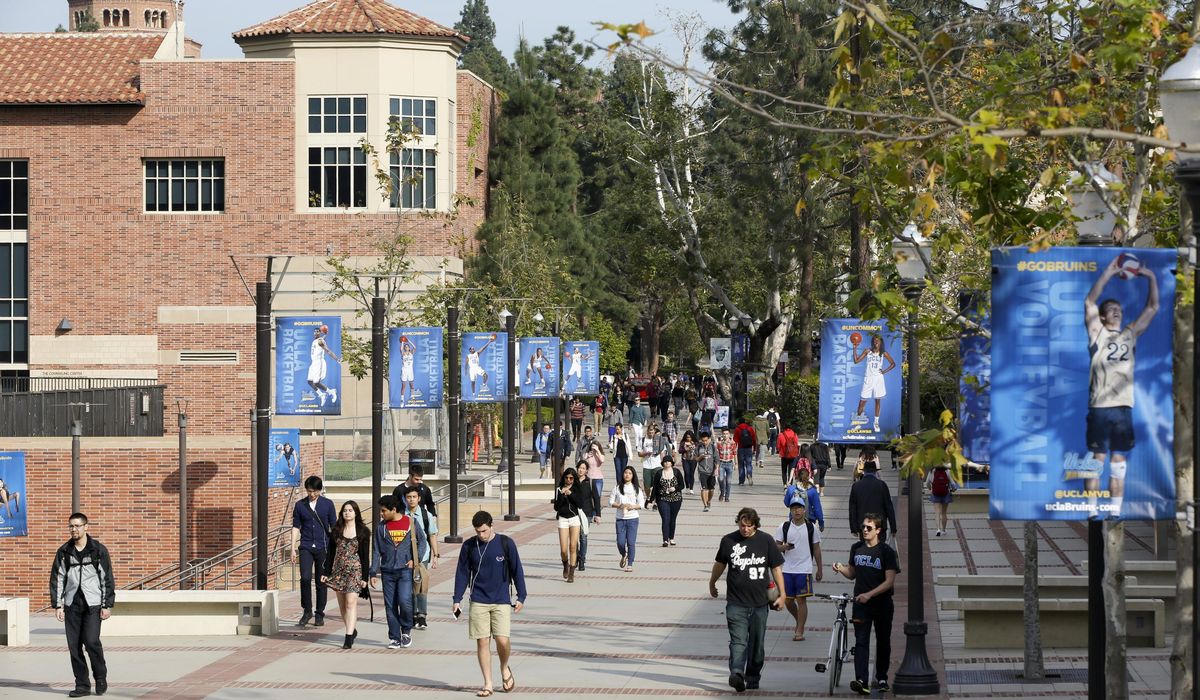


There were 5.5% more freshmen enrolled in college last fall, according to a final report from the National Student Clearinghouse Research Center that corrects previous figures showing only a 5% decline.
The Herndon, Virginia-based nonprofit said Thursday that the increase of 129,874 new students at all higher education institutions from fall 2023 to fall 2024 resulted in 2,484,841 total freshmen. That’s 1% higher than the last pre-pandemic tally in fall 2019.
Over the same period, the number of 18-year-old freshmen entering right after high school grew by a slower rate of 3.4%. That resulted in 1,789,297 students matriculating at age 18 in the fall, or 1.2% fewer than the last year before COVID-19 disrupted college admissions.
“So most of the growth was among older freshmen, meaning age 21 and up,” said Doug Shapiro, the clearinghouse’s executive director. “Three categories — from 21 to 24, 25 to 30, and 30 and up — grew by double-digit rates this fall.”
Enrollment in community colleges led the way, surging by 7.1% or about 63,000 freshmen last fall.
These figures reflect a double-digit swing from a now-retracted October report that found a 5% drop in first-year headcount, including a 6% plunge in 18-year-old freshmen.
The clearinghouse withdrew that preliminary report on Jan. 13, blaming a “methodological error” for miscounting some undergraduates as dual-enrolled high school students.
The numbers had added to public criticism of the Department of Education’s botched revision of the Free Application for Federal Student Aid, which lawmakers and higher education insiders widely blamed for discouraging applicants.
Citing the department’s internal data, the Government Accountability Office reported in September that a three-month FAFSA launch delay and technical glitches contributed to 432,000 fewer students submitting a college aid application for the 2024-25 term, a 3% decrease from the previous application cycle.
Responding to a question from The Washington Times this week, Mr. Shapiro hypothesized that Education Department changes to the aid calculation formula resulted in “a larger percentage of the students who did complete the FAFSA being eligible for aid,” even though he believed 10% fewer high school seniors applied than in the previous cycle.
He said further research suggested this increased aid disbursement could have led more students to enroll as freshmen, explaining the 5.5% surge.
“In fact, it appears that that difference was enough to easily compensate for the fewer students who completed the FAFSA, so that the total number of students eligible for aid could have gone up,” Mr. Shapiro added.
In its final report, the clearinghouse found total enrollment for higher education increased by 4.5% or roughly 817,000 students from fall 2023 to 19.1 million in fall 2024. That’s 0.4% or about 83,000 students higher than in 2019.
Nevertheless, undergraduate enrollment remained lower than pre-pandemic levels, reflecting increased awareness among young people about rising tuition and living costs.
Reached for comment, some higher education insiders criticized the gap between the clearinghouse’s October and January estimates.
“I think that swinging from a big loss to a big gain has shaken the industry’s confidence in this very important report,” said Robert Kelchen, head of the Department of Educational Leadership and Policy Studies at the University of Tennessee-Knoxville. “The NSC needs to be brutally transparent about what happened and how they will ensure that it never happens again.”
“It is a huge miss, one way or the other,” added Peter Wood, president of the conservative National Association of Scholars and a former associate provost of Boston University. “I am not confident that the new numbers are reliable.”
According to the research center’s director, Mr. Shapiro, the error arose from miscalculating the number of freshmen based on an analysis of students’ ages.
He told reporters this week that his staff missed the error because the October estimates fit “ready explanations” blaming the FAFSA fiasco and other factors for enrollment declines. He said they did not discover the error until they started preparing Thursday’s report.
The miscalculation suggests it could be time to revisit a 2008 congressional decision that banned federal student recordkeeping, said Timothy Cain, a higher education professor at the University of Georgia.
“Without federal data, institutions and states must rely on the clearinghouse,” Mr. Cain said. “A secure, comprehensive, federal version would be extremely valuable for researchers, institutions, and governments.”
• Sean Salai can be reached at ssalai@washingtontimes.com.
